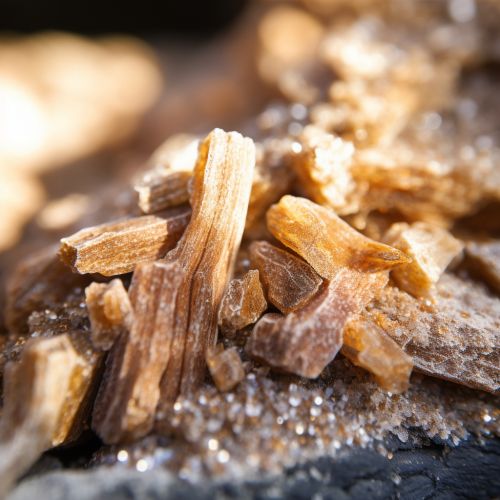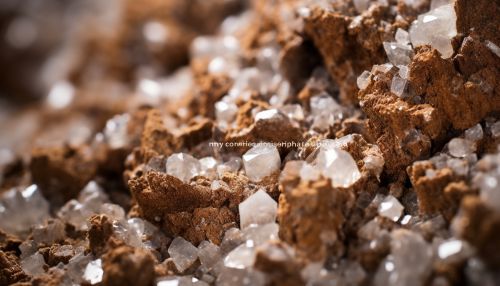Vermiculite
Introduction
Vermiculite is a hydrous phyllosilicate mineral that undergoes significant expansion when heated. Exfoliation occurs when the mineral is heated sufficiently, and commercial furnaces can routinely produce this effect. Vermiculite is formed by weathering or hydrothermal alteration of biotite or phlogopite. Large commercial vermiculite mines currently exist in Russia, South Africa, China, and Brazil.
Formation and Occurrence
Vermiculite is a secondary mineral, meaning it is formed through the alteration of other minerals. Specifically, it is a product of the weathering or hydrothermal alteration of biotite or phlogopite. These are both mica minerals, and they form flat, plate-like crystals. The weathering process, which is often facilitated by the presence of water, causes the mica to expand and form vermiculite.


Vermiculite deposits can be found all over the world, including in Australia, Brazil, Bulgaria, Kenya, Russia, South Africa, Uganda, USA and Zimbabwe. However, not all these deposits are currently being mined. The largest active mines are in Russia (Ural Mountains), South Africa (Palabora), and China.
Properties
Vermiculite is a unique mineral that expands when it is heated. This property, known as exfoliation, is what makes vermiculite so useful in various industrial applications. The process of exfoliation involves the rapid heating of the vermiculite mineral, which causes the water contained within it to turn to steam. This, in turn, causes the layers of the mineral to expand (or "exfoliate") and separate, creating a light, airy material that is fire-resistant, absorbent, and chemically inert.
Vermiculite is also a very good insulator, meaning it is effective at blocking heat, sound, and electricity. This makes it useful in a variety of applications, from insulation in buildings to packaging material for hazardous chemicals.
Uses
Due to its unique properties, vermiculite has a wide range of uses. One of the most common uses of vermiculite is in the construction industry. Because of its insulating properties and its ability to expand when heated, vermiculite is often used as an additive to fireproof wallboards and other construction materials.
Vermiculite is also widely used in the horticulture industry. When mixed with soil, it can improve aeration and drainage while also maintaining necessary water and nutrient levels. This makes it an excellent choice for potting mixes and other growing mediums.
In addition, vermiculite is used in various industrial applications. For example, it is used as a packing material for hazardous chemicals due to its absorbent properties and chemical inertness. It is also used in the automotive industry as a heat shield and in the energy sector as an insulator in high-temperature applications.
Health and Safety
While vermiculite itself is not harmful, some vermiculite insulation can contain asbestos fibers, which can be harmful if inhaled. Asbestos is not a health risk if it is enclosed and undisturbed, but if it becomes airborne, it can be inhaled and cause serious health problems, including lung cancer and mesothelioma.
Therefore, if you have vermiculite insulation in your home, it is recommended that you do not disturb it. If you need to do work that involves disturbing the insulation, such as renovations or repairs, it is recommended that you hire a professional who is trained in handling asbestos safely.
